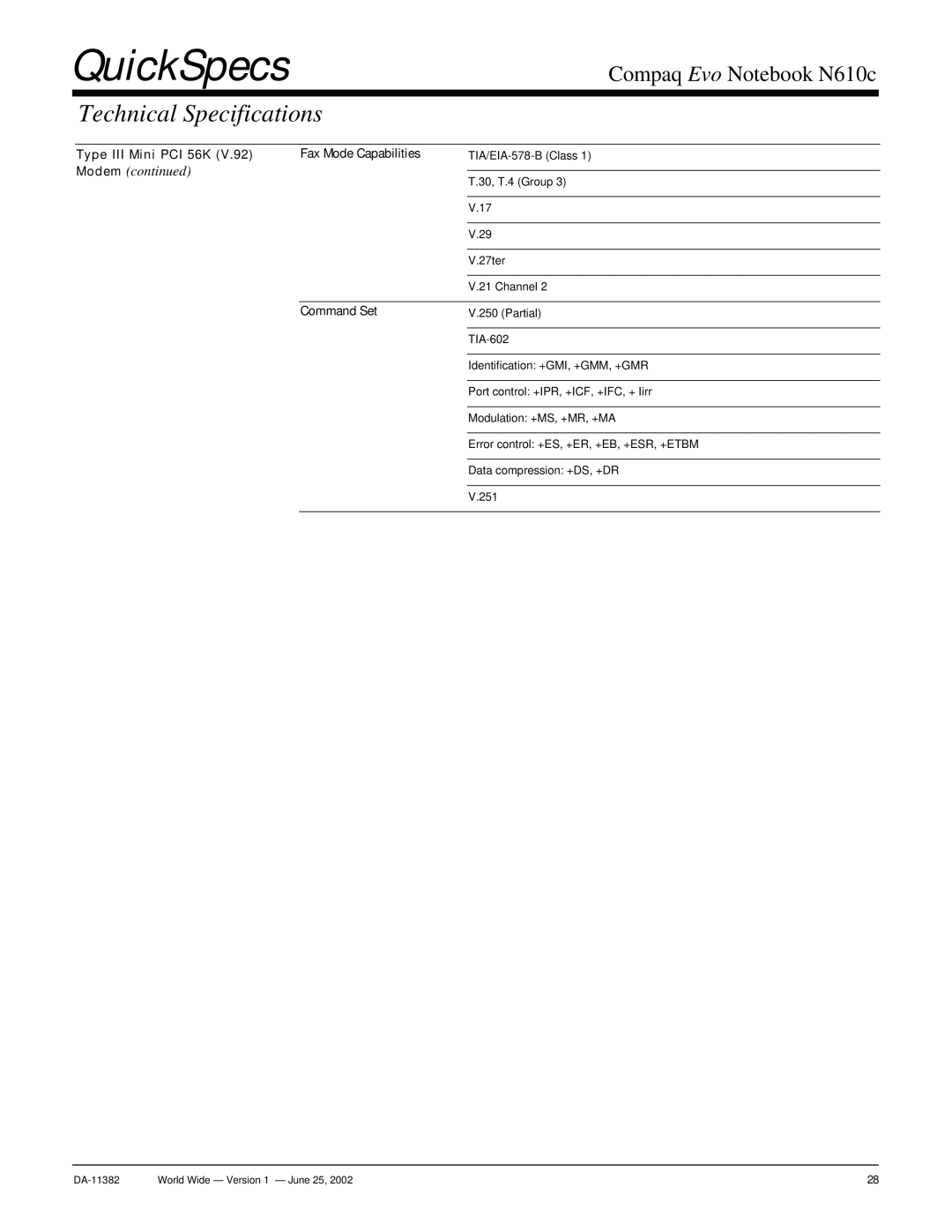N610c specifications
The Compaq N610c, a notable entry in the world of laptops during its time, was designed to cater to both business professionals and casual users alike. Released during the early 2000s, this laptop struck a balance between performance and portability, making it a versatile choice for various computing tasks.One of the main features of the Compaq N610c is its compact design, which not only promotes mobility but also provides a sleek aesthetic. Weighing around 5.5 pounds, the laptop was easy to carry, making it suitable for on-the-go computing. The 15-inch screen offered a resolution of 1024x768 pixels, providing crisp and clear visuals for both work and entertainment, a perfect fit for office applications and multimedia playback.
At the heart of the Compaq N610c was its robust processing power, featuring Intel's Pentium 4M processors. This series offered significant improvements in performance and energy efficiency, allowing users to run demanding applications smoothly. The inclusion of DDR RAM enhanced data transfer speeds, accommodating multitasking without significant slowdowns.
Storage options included a variety of hard drive capacities, allowing users to choose the configuration that best suited their needs. The laptop supported both CD-RW and DVD-ROM drives, catering to users who required optical media capabilities for software installations or media playback.
Connectivity was another strong suit of the N610c. It came equipped with several USB ports, a parallel port, and an Ethernet port for network connections. Integrated Wi-Fi support enabled users to connect to wireless networks, greatly enhancing its utility in both office and home environments.
In terms of battery life, the Compaq N610c offered reasonable longevity, essential for users who needed to work on the go without frequent recharging. The laptop also featured a comfortable keyboard and a responsive touchpad, enhancing the user experience.
Overall, the Compaq N610c was characterized by its reliability, decent performance, and practical features. While it may seem dated compared to modern laptops, its significance in the evolution of mobile computing cannot be overlooked, serving as a sturdy option for many users during its time.

